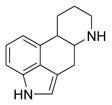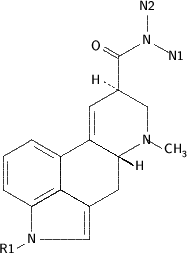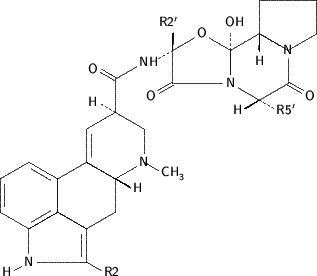EVIDENCE-BASED ANSWER
No randomized controlled trials of pharmacologic therapy for acute migraine in pregnant women are available. Three treatment studies suggest that nonpharmacological therapies (combinations of skin warming, relaxation, biofeedback, and physical therapy) were effective for pain relief (strength of recommendation [SOR]: C, poor-quality cohort and case-control studies). Practice guidelines and most review articles recommend acetaminophen as the first-line therapy (SOR: C, expert opinion). Treatment modalities, including medications, should be chosen based on both effectiveness for nonpregnant patients and established pregnancy safety from surveillance studies.
CLINICAL COMMENTARY
It is helpful to test nonpharmacologic treatments during the prepregnancy period
For young women diagnosed with migraine, begin discussing with them during the family planning period treatment options for acute migraine in pregnancy. Trials of approved medications and nonpharmacologic treatments can be given at this time to evaluate their efficacy and to give the patient time to feel comfortable with them. It is especially important to test nonpharmacologic treatments during the prepregnancy period.
In my own experience as a physician, and as a young woman with a long-standing history of migraine, biofeedback and relaxation techniques work better when the patient is first exposed during pain-free or subacute pain periods. For moderate to severe migraineurs, it is difficult to institute these techniques during a full-blown attack. For such patients, experience with safer treatment modalities before pregnancy would allow greater success for treatment of acute migraine during pregnancy.
Tricia C. Elliott, MD Department of Family Medicine, Baylor College of Medicine, Houston, Tex
* Evidence summary
Eighteen percent of all women report migraines. (1) As estrogen levels increase early in pregnancy, many women report an increase in headache or new-onset headache. As estrogen levels stabilize in the second and third trimester, 60% to 70% of women with migraine report reduction in symptoms. (1,2)
Nonpharmacologic treatment. A small case series of electromyograph (EMG) biofeedback and relaxation techniques on 5 pregnant women showed that 4 became headache-free. (3) It is impossible to say whether it was the intervention, natural disease progression, or the attention received from the therapist that produced this result. Two studies were published together evaluating thermal biofeedback, relaxation training, and physical therapy exercises. The first, a cohort study, showed decrease in symptoms for 15 of 19 women. The second, a small randomized controlled trial, compared 11 women using the combination treatment with 14 control women who received attention from the therapist but no other intervention. More than 72% of the treatment arm improved, compared with nearly 29% of the attention control group. (4) Interpretation of these studies is limited by small sample size and testing in settings with specialized resources that are not found in every community.
Sumatriptan and other agents. Six studies have evaluated sumatriptan use in pregnancy. (5) All were designed to evaluate teratogenicity and harm. None evaluated treatment efficacy in pregnancy. One prospective controlled cohort study showed an increase in miscarriage rates that did not reach statistical significance. (6) No trials showed an increased risk in birth defects compared with the general population.
A single case report on the use of intravenous magnesium sulfate and prochlorperazine reported that the combination was effective for aborting a prolonged (6-day) migraine with aura for a pregnant woman. (7)
Safety in pregnancy. The US Food and Drug Administration (FDA) assigns fetal risk categories to all drugs based on controlled studies in humans, animal reproduction studies, and surveillance studies. (8) Though no data exist on the effectiveness of other medications for migraine in pregnancy, it is reasonable to select drugs for both effectiveness for nonpregnant patients and established safety as determined by the FDA's fetal risk summary. The TASte shows commonly used drugs for acute migraine and their pregnancy risk category classification.
Recommendations from others
Practice guidelines published by the American Academy of Neurology recommend acetaminophen as first-line therapy based on its established safety in surveillance studies, although it is of questionable efficacy for nonpregnant patients. They also recommend nonpharmacologic treatment as an acceptable option in pregnancy. (9) Most review articles also recommend acetaminophen alone or in combination with codeine as the treatment of first choice. (1,10)
REFERENCES
(1.)Silberstein SD. Migraine and pregnancy. Neurol Clin 1997; 15:209-231.
(2.) Maggioni F, Alessi C, Maggino T, Zanchin G. Headache during pregnancy. Cephalalgia 1997; 17:765-769.
(3.) Hickling EJ, Silverman DJ, Loos W. A non-pharmacological treatment of vascular headache during pregnancy. Headache 1990; 30:407-410.
(4.) Marcus DA, Scharff L, Turk DC. Nonpharmacological management of migraines in pregnancy. Psychosom Med 1995; 57:527-535.
(5.) Hilaire ML, Cross LB, Eichner SF. Treatment of migraine headaches with sumatriptan in pregnancy. Ann Pharmacother 2004; 38:1726-1730.
(6.) Shuhaiber S, Pastuszak A, Schick B, et al. Pregnancy outcome following first trimester exposure to sumatriptan. Neurology 1998; 51:581-583.
(7.) Briggs GG, Freeman RK, Yaffe SJ. Drugs in Pregnancy and Lactation: A Reference Guide to Fetal and Neonatal Risk. 6th ed. Philadelphia, Pa: Lippincott, Williams, and Wilkins; 2002.
(8.) Rozen TD. Aborting a prolonged migrainous aura with intravenous prochlorperazine and magnesium sulfate. Headache 2003; 43:901-903.
(9.) Silberstein SD. Practice parameter: Evidence-based guidelines for migraine headache (an evidence based review): report of the Quality Standards Subcommittee of the American Academy of Neurology. Neurology 2000; 55:754-762.
(10.) Gladstone JP, Eross EJ, Dodick DW. Migraine in special populations. Treatment strategies for children and adolescents, pregnant women, and the elderly. Postgrad Med 2004; 115:39-44, 47-50.
FAST TRACK
Begin discussing treatment options before pregnancy; give the patient time to feel comfortable with different therapies
Stephen J. Conner, MD Dwight D. Eisenhower Army Medical Center Family Medicine Residency Program, Ft. Gordon, Georgia
Stacy Rideout, MLIS East Carolina University, Greenville, NC
COPYRIGHT 2005 Dowden Health Media, Inc.
COPYRIGHT 2005 Gale Group




